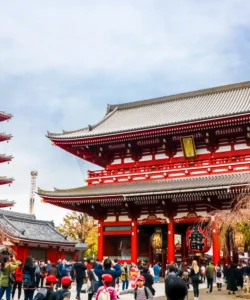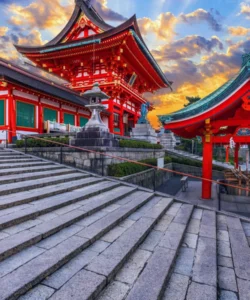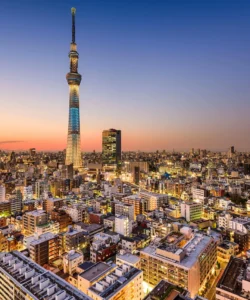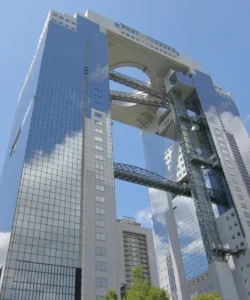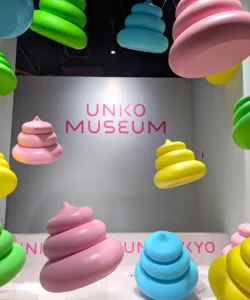Kiyomizu-dera Temple (清水寺, literally “Pure Water Temple”) is one of Japan’s most celebrated and iconic Buddhist temples, nestled in the eastern hills of Kyoto. It is a UNESCO World Heritage site, part of the “Historic Monuments of Ancient Kyoto,” and renowned for its magnificent wooden stage that offers breathtaking views of the city.
Address:
294 Kiyomizu 1-chome, Higashiyama-ku, Kyoto 605-0862, Japan. It is located in the scenic Higashiyama District, easily accessible from central Kyoto via bus and a pleasant uphill walk through traditional streets.
Outstanding Features:
- The Iconic Wooden Stage: The most famous feature of Kiyomizu-dera is its expansive wooden main hall, which features a large veranda, or stage, that juts out over the hillside. This impressive structure is built entirely without the use of a single nail, supported by massive zelkova pillars and an intricate scaffolding system. From this stage, visitors can enjoy unparalleled panoramic views of Kyoto city, particularly stunning during cherry blossom season (spring) and autumn leaf season.
- Otowa Waterfall: Below the main hall is the Otowa Waterfall, where three separate streams of water flow into a pond. Visitors use long-handled cups to drink from the streams, each believed to offer a different benefit: longevity, success at school, and a fortunate love life. Drinking from all three is considered greedy.
- Jishu Shrine: Dedicated to the deity of love and matchmaking, Jishu Shrine is located just behind the main hall. It features two “love stones” placed about 18 meters apart. It is said that if you can walk from one stone to the other with your eyes closed, you will find true love.
- Diverse Temple Complex: Kiyomizu-dera is not just the main hall; it’s a sprawling complex with numerous other halls, pagodas, and gates. These include the vibrant vermillion Nio-mon gate (Deva Gate), the three-storied pagoda (Sanjū-no-tō), the bell tower, and various sub-temples, each with its own history and charm.
- Cultural Significance and History: Founded in 780 CE on the site of the Otowa Waterfall, Kiyomizu-dera has a long and rich history. It is associated with the Hosso sect of Buddhism, one of the oldest Buddhist schools in Japan. The current structures date mostly from the early Edo Period (1633) after being rebuilt following various fires. It has been a significant pilgrimage site for centuries.
- Seasonal Beauty: The temple grounds are famous for their stunning natural beauty throughout the year. Cherry blossoms in spring, lush greenery in summer, and vibrant autumn foliage in the fall make it a breathtaking destination in any season. Special evening illuminations during spring and autumn further enhance its allure.
- Approach Streets (Sannenzaka & Ninnenzaka): The narrow, charming cobblestone streets leading up to Kiyomizu-dera, Sannenzaka and Ninnenzaka, are lined with traditional wooden buildings housing shops selling souvenirs, ceramics (Kiyomizu-yaki), sweets, and traditional Kyoto crafts. This approach enhances the overall traditional Japanese experience.
Comparison with Similar Locations:
Kiyomizu-dera, while a hallmark of Kyoto’s temple scene, offers a distinct experience compared to other major temples and religious sites in Japan:
- Elevated Wooden Architecture: While other temples like Todai-ji in Nara boast massive wooden structures (housing the Great Buddha), Kiyomizu-dera’s unique “stage” built over a valley without nails is an architectural marvel that sets it apart. Its construction method is specific and iconic, distinct from the grand, enclosed main halls of many other temples.
- Panoramic City Views: While some temples (e.g., temples on Mount Hiei) offer distant views, Kiyomizu-dera provides an iconic and easily accessible panoramic view over Kyoto city, making it a prime spot for photography and appreciating the urban landscape against the natural backdrop.
- Interactive Spiritual Elements: The Otowa Waterfall and the “love stones” at Jishu Shrine offer interactive and somewhat playful spiritual experiences that are a bit more direct and hands-on than what is typically found at purely contemplative Zen temples like Ryoan-ji (famous for its abstract rock garden) or more austere historical sites.
- Pilgrimage and Commercialization: While all major temples attract tourists, Kiyomizu-dera’s approach via the bustling Sannenzaka and Ninnenzaka streets, with their numerous souvenir shops and eateries, creates a unique blend of spiritual pilgrimage and commercial vibrancy that is more pronounced than at some other temple complexes (e.g., the more solemn approach to Eihei-ji or the secluded feeling of many temples in Koyasan).
- Contrast to Gilded Temples: Unlike the dazzling Kinkaku-ji (Golden Pavilion), which is known for its literal gold-leafed exterior, Kiyomizu-dera’s beauty lies in its grand, unadorned wooden architecture, its natural setting, and its panoramic outlook, embodying a different aesthetic of Japanese temple design.
Kiyomizu-dera’s blend of impressive architecture, spiritual significance, interactive rituals, and breathtaking views makes it an unforgettable and quintessential Kyoto experience.





